“Breastfeeding gives babies the best possible start in life,” said Dr. Tedros Adhanom Ghebreyesus, Director-General of WHO.
“Important Notice: Mother’s milk is BEST for your baby” – mentioned at the front of the packet of any infant formula.
Nothing new in it, as you are already aware of this. But why? What are the benefits of breastfeeding that compels everyone to use nothing but the word “best” with breastfeeding? Let’s understand.

What are the benefits of breastfeeding –
Breastfeeding is awkward and inconvenient and time-consuming…..
My baby does not like it……
My baby refuses to suck breast milk…….
I think I am unable to produce sufficient milk…. my baby stays hungry and cry a lot…….
What is/ was/ will be your excuse?
I know, breastfeeding is NOT very easy if you have multiple options. Being a mother of two kids, I have had enough hands-on practice in this matter.
Every Woman’s journey to motherhood is different, but one of the first decision a new mom has to make is how to feed her newborn. When a mother chooses to breastfeed, she invests in her baby’s future. Period. There is no “if” there is no “but”.
Why?
“For infants, not being breastfed is associated with an increased incidence of infectious morbidity, as well as elevated risks of childhood obesity, type 1 and type 2 diabetes, leukemia, and sudden infant death syndrome.
For mothers, failure to breastfeed is associated with an increased incidence of postmenopausal breast cancer, ovarian cancer, retained gestational weight gain, type 2 diabetes, myocardial infarction, and the metabolic syndrome.” -Alison Stuebe in The Risks of Not Breastfeeding for Mothers and Infants (1)
No, I have no intention to make you scared but to discuss the long list of benefits that you might miss if not breastfeeding your child.
Breastfeeding is NOT beneficial only for your baby but for you too.

Benefits of breastfeeding for baby
1. Breast milk provides the ideal nutrition for the babies
The nutritional composition of human milk is best for infants as it provides nutrients in easily digestible and bioavailable form. In human milk, protein-calorie percent is lower than cow’s milk and carbohydrate calorie percent is higher in human milk. This makes human milk ideal for infants. Fat content in human milk is comparatively less which helps in easy absorption. Lipids like DHA(Docosahexaenoic acid) and EPA (Eicosapentaenoic acid) are present only in human milk which is very essential for brain development.(2,3,4,5,6)
Comparison of human milk with cow’s milk and buffalo’s milk (values per 100grams)
| Nutritional Benefits | Human milk | Cow’s milk | Buffalo’s milk |
| Water (grams) | 88 | 87.5 | 81 |
| Energy (Kcal) | 65 | 67 | 117 |
| Protein (grams) | 1.1 | 3.2 | 4.3 |
| Carbohydrates (grams) | 7.4 | 4.4 | 5 |
| Fat (grams) | 3.4 | 4.1 | 6.5 |
| Calcium (mg) | 28 | 120 | 210 |
| Phosphorous(mg) | 11 | 90 | 130 |
| Iron (mg) | Negligible | 0.2 | 0.2 |
| beta carotene/carotene (ug) | 41 | 53 | 48 |
| Thiamine (mg) | 0.02 | 0.05 | 0.04 |
| Riboflavin (mg) | 0.02 | 0.19 | 0.04 |
| Vitamin C (mg) | 3 | 2 | 1 |
| Caseinogen and Lactalbumin ratio | 1:2 | 3:1 | – |
Reference Values are taken from Nutritive Value of Indian Foods, National Institute of Nutrition, ICMR.
2) Breast milk Provides Hormones and growth factor benefits
Breast milk is a rich source of hormones like a thyroid-stimulating hormone (TSH), thyroxine, parathyroid hormone, corticosteroids, calcitonin, erythropoietin, oxytocin, growth hormone-releasing factor, insulin, and prolactin. It contains growth-regulating factors, growth-promoting factors, and growth modulators. Epidermal growth factor enhances the maturation of the infant gastrointestinal tract.
3) Breast milk contains important immunological factors
These factors are present in colostrum as well as in matured milk. Colostrum particles which have anti-infective properties of human milk are stable in acid medium of the stomach and resistant to the digestive enzymes. When the mother is exposed to viruses and bacteria, she starts producing antibodies. These antibodies are then secreted into the breast milk and passed to the baby during feeding. Protective other bio active factors unique to human milk are summarized in the following table.(7,8,9,10)

Immunological factors in human milk
| Immunological factors in human milk |
Target or Function |
| Ig G | E.coli, B. pertussis, H influenza type b, S pneumonia, N meningitides, and more |
| Secretory Ig A | protects intestinal epithelium, targets enteric and respiratory pathogens e.g. salmonella species, G lamblia, S pneumonia, Influenza virus. |
| Ig M | fights against V.cholerae, Ecoli, S flexinori |
| Cytokines | Activate T cells, enhance Ig A production, induce proliferation of macrophages, decrease inflammatory cytokine synthesis. |
| Anti inflammatory components such as histaminase, anti proteases, prostaglandins. |
Histaminase degrades hydrogen peroxide, antiproteases neutralize enzymes that act in inflammation and prostaglandins are cytoprotective. |
| Bifidobacterium bifidium, growth factors oligosaccharides, glycopeptides, alpha lactoglobulin, lactoferrin, sialyllactose |
They fight against harmful bacteria which can infect the gut. |
| Macrophages | Engulf bacteria |
| Interferon | Antiviral agent |
| Oligosaccharides | Inhibit bacteria adhesion to epithelium |
| B -12 and folate binding proteins |
Compete with bacteria for these vitamins |
| Anti -Giardia factor | Lipid with anti- giardia function |
| Trophic factors | Accelerate gut development |
| Growth factors in colostrum and milk |
Insulin, epidermal growth factor, Insulin like growth factor are required for continued rapid growth of infant especially important for gut development. |
| Bile salt stimulated lipase |
Improves fat digestion in new born |
| Docosahexaenoic and archedonic acids | Constituents of cell membranes in brain and neural tissue |
| Lysozyme | An antibacterial enzyme, lyses cell walls of bacteria. |
Source : Paediatric manual of clinical dietetics, American dietetics association.
4) Breastfeeding may reduce disease risk
Babies who are exclusively breastfed are at lower risk of many diseases and illness which include Middle ear infection, Respiratory infections, Colds and infections, Gut infections, Intestinal tissue damage, Sudden Infant Death Syndrome (SIDS), Allergic diseases, Celiac diseases, Inflammatory bowel disease, Diabetes, Childhood leukemia.(11,12,13,14,15,16,17,18,19)
5) Breastfeeding promotes healthy weight gain
Breastfed babies have lower obesity rates than formula-fed babies. They also have more leptin and more beneficial gut bacteria. Breastfeeding promotes healthy weight gain and prevents childhood obesity. Breastfed babies have higher amounts of beneficial gut bacteria, which may affect fat storage. Babies fed on breast milk also have more leptin in their systems than formula-fed babies. Leptin is a key hormone for regulating appetite and fat storage. (20,21,22,23)
6) Breastfeeding may make children smarter
Breast milk contains specific substances involved in brain development. It is rich in sulfur-containing amino acids like cysteine and methionine which are required for Central Nervous System (CNS) development. It is rich in taurine which is an important neurotransmitter and neuromodulator for brain and retina.DHA present in milk helps in the neural division. Presence of choline, acetylcholine, phospholipid precursors ensures optimum metabolism and brain development. Exclusive breastfed have shown higher IQ scores and better cognitive abilities. (24,25,26,27)

Benefits of breastfeeding for mothers
Not only babies but new moms are also benefited from breastfeeding. Some advantages of breastfeeding are as follows-
1) Breastfeeding gives a valid reason to sit down, put feet up and relax while moms can bond with their precious newborn. If you have breastfed your child ever, you know the feeling is priceless.
2) It reduces postpartum bleeding and delays the menstrual cycle. When a mother feeds the infant, the uterus comes back to normal size and arrests bleeding due to the secretion of oxytocin. (28,29)
3) Breastfeeding enables the mother to shed extra weight accumulated during pregnancy under the effect of various hormones. (30, 31)
4) It is convenient for a mother to feed the baby anytime and at any place. It saves time, money and energy.
5) Breastfeeding improves your bone density and decreases the risk of fractures.
6) It reduces the risk of postpartum depression. (32)
7) Risk of breast and ovarian cancer is higher in women who have not breastfed their children. It decreases the risk of type 2 diabetes. By breastfeeding the requirement of insulin decreases for diabetic mother.(33,34,35,36)
Factors essential for ensuring the benefits of breastfeeding
Milk production and feeding technique -these are the two most crucial factors for the success of early and exclusive breastfeeding. Apart from meeting the normal nutritional need, lactating mother’s must eat extra too –
• replenish and repair the body after pregnancy and delivery
• produce breast milk for the optimal nutritional support of the baby
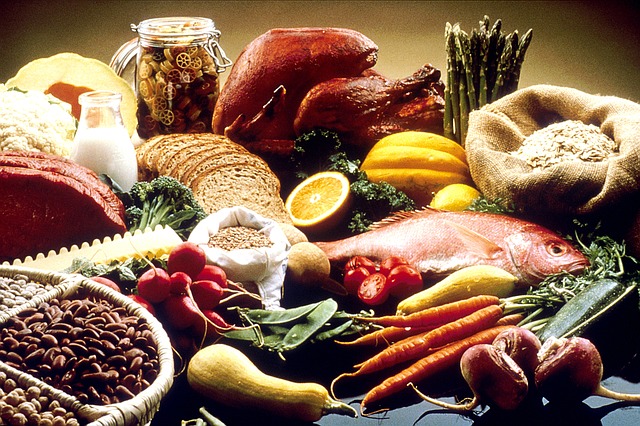
What are the nutritional requirements of Lactating/ breastfeeding mothers to produce enough milk?
No, there will not be constant flow of breast milk at the initial days(first 2-3 days). It is NORMAL. But diet of lactating mother and her nutritional status during pregnancy affect to a certain extent quality and quantity of breast milk. Nutritional needs exceed during lactation compared to pregnancy. In six months a normally developing infant doubles the birth weight equivalent of which is accumulated in 9 months. Nutritional requirements are maximum during lactation compared to any other age groups in a woman’s life hence the diet should be balanced and meet the requirement. The breastfeeding mother requires 2500 kcal approximately per day. A balanced diet should be included which consists of whole grains, complex carbohydrates, and good fats. Plenty of green and colored vegetables and fruits must be included.
Read more– how to make your kitchen smart.
Top 9 Healthy summer drink ideas
Things to DO’s while breastfeeding-
a) Lactating mother should increase fluid intake for adequate milk production since milk is a fluid tissue. Water and beverages like juices, soups, buttermilk, and milk add to the fluid necessary to produce milk.
b) A lactating mother should take 2-3 liters of fluid per day. To prevent osteoporosis, the mother should take at least one liter of milk every day.
c) Galactagogue or galactagogue act by increasing the prolactin secretion which in turn increases milk production. They work psychologically too for example sucking is the best galactagogue. Garlic, almonds, milk, and garden cress seeds are considered as a galactagogue. Few animal origin foods like mutton and fish to increase milk production. Traditional foods like gondh laddu or sonth laddu can be included which are nutrient-dense and enhance milk production.
Diet Plan for Breastfeeding Mothers can include Galactagogues food such as:
• Whole grains especially oatmeal
• Green leafy (spinach, broccoli, kale)
• Fennel seeds, cumin seeds
• Garlic and ginger
• Chickpeas, nuts, almonds, flax seeds
• Dry fruit Gur Chikki (source of iron and protein)
d) A diet rich protein is essential during breastfeeding as it helps in producing breast milk. It will also assist in losing post-delivery weight much faster. Mothers can also include protein powder prescribed by doctors in milk. Vegetarian mothers must include orange masoor dal, toor dal, mung dal (whole green), sprouts, nuts, seeds, milk, curd, paneer, and cheese. Non – vegetarian mothers can include eggs, fish and chicken as per the preference.
d) Rice, whole wheat flour, daliya (broken wheat), ragi, jowar, corn, bajra, and oats can be included. Sprouted grains are much healthier than normal dry grains. Make flour of sprouted ragi and bajra.
e) It’s essential to use good oil for cooking. Include cold-pressed or kachhi ghani version of mustard oil, coconut oil, filtered groundnut oil for Indian cuisine as per your tradition. Cold-pressed olive oil, avocado oil is a great choice for continental dishes. Don’t forget to add a spoon full of good quality ghee in lunch and dinner for better absorption of vitamins.
f) seasonal fruits and vegetables are must in daily diet to meet the excess requirement of vitamins, minerals, and other phyto-nutrients.

Read more – Are you eating the right kind of oats
Brown rice or white rice- what to eat
Which is the best cooking oil in India
Few important tips to be followed while breastfeeding –
It is important to take a walk for 20-30 minutes every day at home for better digestion.
Burping your baby is as important as feeding your baby. Try burping your baby for 5-8 times.
Take ajwain water (carrom seeds) after half an hour of meals for better digestion. If certain foods like kidney beans, green peas, cabbage are causing discomfort to you and baby please avoid them in your diet.
Things NOT TO DO while breastfeeding-
a) Do not go for any crash diets for weight loss immediately after the delivery. Please take 6-8 months to plan for weight loss. Instead of calorie cutting include balanced and healthy meals in your diet.
b) Caffeine and alcohol consumption must be stopped during the breastfeeding period.
c) Certain allergic foods like fish, eggs, and peanuts must be consumed carefully as an infant may be sensitive and react to it.
d) Wash all the vegetables and fruits thoroughly to avoid contamination of pesticides etc.
e) Avoid spicy, high salted and oily food. No outside packaged or processed foods should not be consumed.
Different forms of Breast milk
Surprised? Yes, there are 4 forms of breast milk which the baby must receive. They are – colostrum, transition milk, fore milk, hind milk.
Colostrum: It’s a MUST – DON’T Discard this
During the first two or three days after delivery, thick yellowish fluid is secreted from the mammary gland. This differs from mature milk and is called colostrum. It is secreted in a small quantity of about 10-40 ml. It is rich in protein. Colostrum is the first immunization to the infant. It also contains viral diseases such as smallpox, polio, measles, and influenza. Colostrum contains large quantities of protective substances and enhances the development and maturation of the baby’s gastrointestinal tract. Colostrum helps a baby pass his or her first stool and help in the excretion of excess bilirubin and prevent jaundice. Colostrum should be given within half an hour of birth.
Composition of Colostrum –
| Nutrient | Amount |
| Energy (Kcal) | 58 |
| Lactose (grams) | 5.3 |
| Protein (grams) | 2.7 |
| Fat (grams) | 2.9 |
| Calcium (mg) | 31 |
| Phosphorus (mg) | 14 |
| Iron (mg) | 0.09 |
| Carotene I.U | 186 |
| Vitamin A..I.U | 296 |
Transition milk:
During the next two weeks, the milk increases in quantity and changes in appearance and composition. This is called Transition milk. Immunoglobulins and protein content decreases while fat and sugar content increases. Exclusive breastfeeding of colostrum and transition milk minimizes infection related to neonatal deaths.
The composition of the milk changes even during the length of a single feed.
Fore milk:
The milk that comes at the start of a feed is called fore milk. Fore milk which is watery has a low level of fat and high in facts sugar, protein, vitamins, minerals, and water. It satisfies the baby’s thirst.
Hindmilk :
Hind milk comes later in a feed and is richer in fat. It satisfies a baby’s hunger and supplies more energy than fore milk.
Babies who are fed with both fore milk and hind milk sleep well and grow healthy.
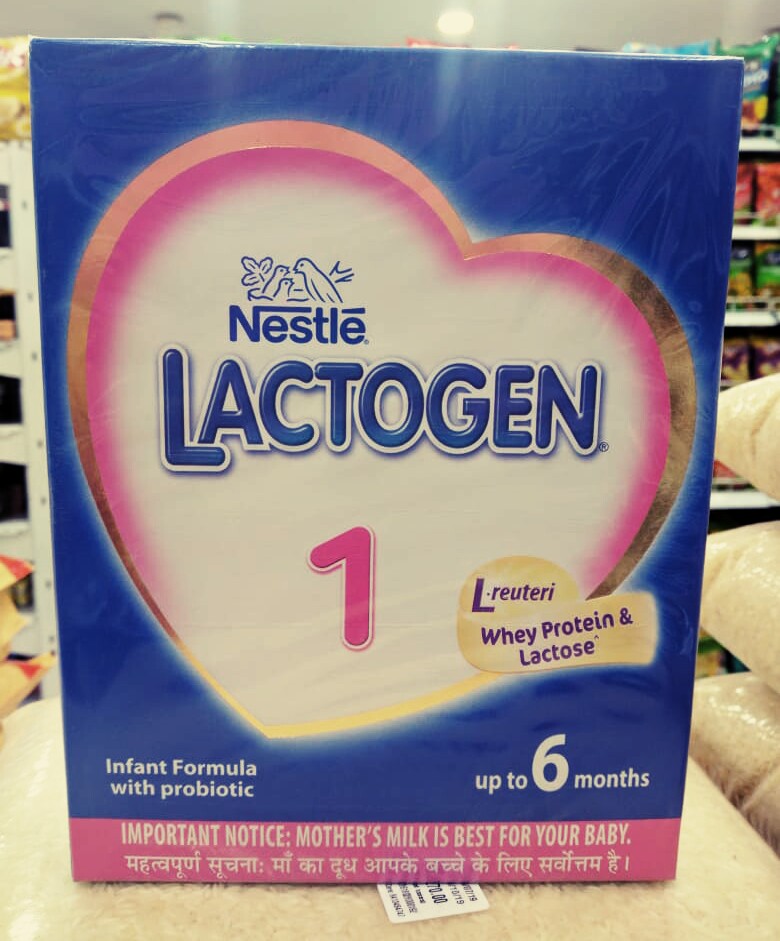
How to feed the child to get all the benefits of breastfeeding?
It’s not only breastfeeding. It is “early” and “exclusive” breastfeeding that ensures all the above-mentioned benefits of breastfeeding.
Keep NO OPTION/SUBSTITUTE of breast milk – Having no option but to breastfeed works best for most.
It’s NORMAL not to have constant milk flow during first 2-3 days. Let your baby continue sucking without switching to any other option. Flow will come soon.
Make sure your hospital allows your baby to keep with you in the same room so that you can feed your baby as per his/her demand.
Early breastfeeding is breastfeeding within an hour of birth which ensure feeding colostrum.
Exclusive breastfeeding is feeding only and only breast milk for the first 6 months of age without even a drop of water.
That means popular prelacteals – like honey, sugar water, jaggery, sugar, etc are not recommended from any angle. These foods will satisfy the thirst and reduce the vigor to suck and may lead to diarrhea and helminthic infestations.
The infant should be put to the breast within half an hour after normal delivery and within four hours of caesarian section. Breastfeeding can be initialed even when the mother is sedated or on IV fluids. Sucking reflex is most active at birth. Over the next few days after delivery, the amount of milk production increases and the color will change to appear more watery and white.
Breastfeeding technique is extremely crucial to make breastfeeding a success. It has been seed most of the cases wrong feeding technique leads to-
• leave the baby hungry,
• irritable,
• suffer from colic pain,
• disturbed sleep,
• failure to gain desired weight etc.
Breastfeeding technique-
Breastfeeding should be done in a clean and quiet place.
1. Mother and child should be comfortable and relaxed during feeding.
2. Mother should be well aware of how to put the baby to breast and how to remove him/her off.
3. At least one breast should be completely emptied at one sitting. So that the baby gets the foremilk as well as hindmilk. Remember foremilk is comparatively thin which satisfy the thirst of the child whereas hindmilk, the thick one which keeps the baby full for a longer time and will help to gain the desired weight. Therefore do not transfer the baby from one breast to another frequently.
4. Starting from 5 minutes initially, feeding time can gradually increase up to 25 minutes in subsequent days. So stay calm and mentally prepared.
5. To “kick out” the swallowed air, breastfeeding should always end with burping. Hold the baby erect over the shoulder and keep rubbing or patting his/her back to evacuate the swallowed air. Failure to do so may lead to regurgitation, vomiting and even abdominal pain.
Why not artificial feeding?

Follow the table below to get the answer – (37)
| Nutrient factors |
Breast milk Composition |
Formula milk composition |
Comment |
| Fats | Rich in brain- building omega 3s, namely DHA and AA. Automatically adjusts to infant’s needs; levels decline as baby gets older. Gets completely absorbed. Rich in cholesterol. Contains fat-digesting enzyme, lipase |
No DHA. Doesn’t adjust to infant’s needs. No cholesterol. Not completely absorbed. No lipase. |
Fat is the most important nutrient in breast milk- cholesterol and DHA vital nutrients for growing brains and bodies. Leftover, un-absorbed fat accounts for unpleasant smelling stools in formula-fed babies. |
| Protein | Soft, easily-digestible. Whey more. Get completely absorbed. Contain Lactoferrin for intestinal health. Lysozyme, an antimicrobial. Rich in brain and body building protein components. Rich in growth factors. Contains sleep-inducing proteins |
Harder-to-digest casein curds. Not completely absorbed, more waste, harder on kidneys. No lactoferrin, or only a trace No lysozyme. Deficient or low in some brain-and body-building proteins. Deficient in growth factors. Does not contain as many sleep-inducing proteins. |
Infants aren’t allergic to human milk protein. |
| Carbohydrates | Rich in lactose Rich in oligosaccharides, which promote intestinal health |
No lactose in some formulas Deficient in oligosaccharides |
Lactose is considered an important carbohydrate for brain development. |
| Immune Boosters |
Rich in living white blood cells, millions per feeding. Rich in immunoglobulins |
No live white blood cells-or any other cells. |
When mother is exposed to a germ, she makes antibodies to that germ and gives these antibodies to her infant via her milk. |
| Vitamins and Minerals | Better absorbed, especially iron, zinc, and calcium Iron is 50 to 75 % absorbed. Contains more selenium (an antioxidant) |
Not absorbed as well Iron is 5 to 10 % absorbed Contains less selenium (an antioxidant) |
Vitamins and minerals in breast milk have a higher bio availability- that is, a greater percentage is absorbed. To compensate, more is added to formula, which makes it harder to digest. |
| Enzymes and Hormones | Rich in digestive enzymes, such as lipase and amylase Rich in many hormones: thyroid, prolactin, oxytocin, and more than 15 others |
Lacks bioactive enzymes and hormones. |
Digestive enzymes promote intestinal health. Hormones contribute to the overall biochemical balance and well- being of baby. |
| Cost and Time |
Apart from the healthy food expenses for mother no extra expenses involved. Mother can feed the baby anytime and anywhere on demand. |
Formulas are very expensive. Also it is very time consuming to sterile the bottles, mix it and get into normal temperature which is safe for baby. |
Breast milk is very convenient and safest form of nutrition to infants. |

Bottom Line-
Allow NO OPTION- Formula milk, bottle etc. Giving no option is the best way to ensure early and exclusive breastfeeding. Keep it simple. Breastfeeding is the best way to provide proper nutrition to your baby in those important first months of their life. To help you through the process, it’s important to get plenty of rest, eat a balanced diet, stay hydrated and follow the feeding technique carefully. This will keep your milk supply robust and your energy high so you can maintain breastfeeding.
The benefits of breastfeeding are not one or two but many. So the question should NOT be “why not artificial feeding?” rather it must be “why not breastfeeding?” Yes, breastfeeding is not very easy. It requires your attention, time and availability for the baby. This is the period when your baby needs only you but nobody to meet all his/her nutritional/physical/emotional needs. No matter what imported or natural sanitizer you are using, when it comes to food -before shifting to even most expensive formula, accept that you are NOT doing the “best” for your baby.


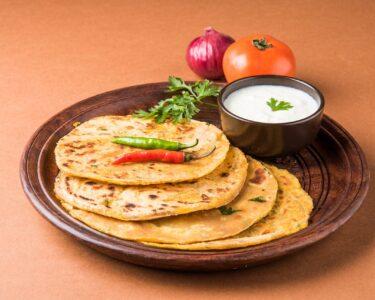
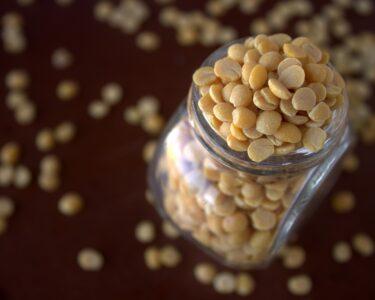

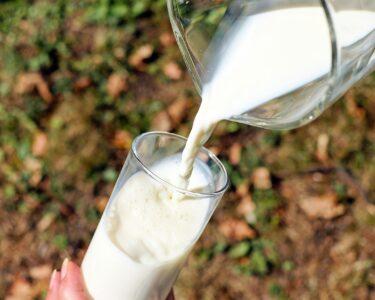
2 Comments